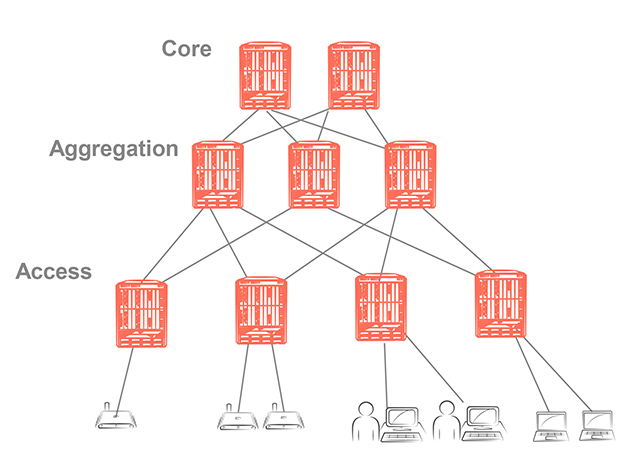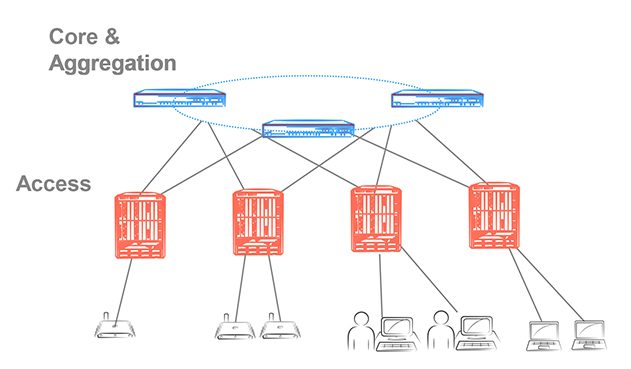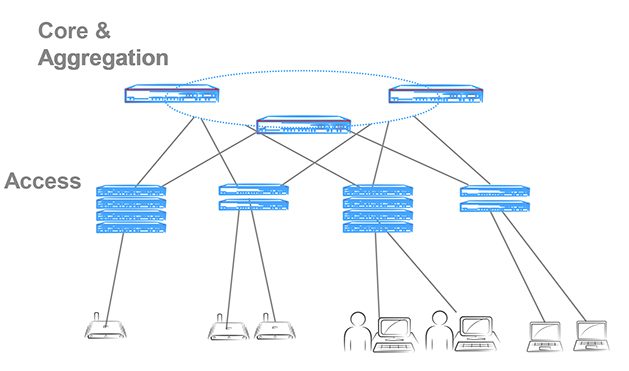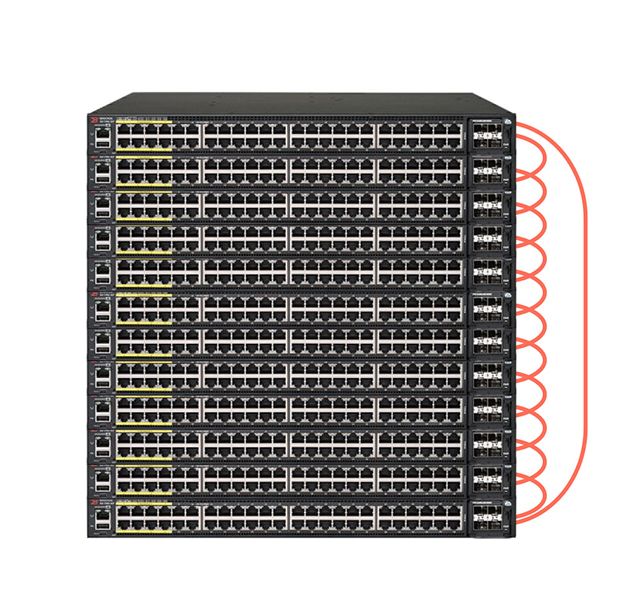01 May 2020 Keeping The Network Simple

Keeping the Network Simple
Technology has been rapidly developing, and the demand for connectivity is increasing. The pressure for businesses is no longer to keep up network functionality but to stay ahead, leaving many organisations dependent on their often four-five years’ old network infrastructure, which is no longer able to meet the requirements needed to run an effective business.
IT teams begin to struggle to cope with the speed of deployment, network management and troubleshooting. The number of devices and technological equipment that needs to be connected is growing exponentially. Therefore, if a network is going to keep up with the demands of a business, it must be fast, flexible, secure and optimised for both performance and cost.
Many organisations are still depending on their classic and, ageing three-tier chassis for all their connectivity and networking. Let’s have a closer look at a traditional core and access layers.
The ageing three-tier design ‘Chassis type solution’ illustrated below:

From the illustration above, you can see that the structure has:
- ‘A complex network architecture’- when there are too many layers, there is a high chance that there are many inactive links.
- The cost of managing a growing network with a chassis type solution that many vendors are offering can get out of hand with too many points of management.
- The high costs and maintenance – organisations got to buy a chassis and then the line cards.
- Expensive upgrades: when an organisation wants to go down the upgrade route, they usually have to replace the entire chassis.
Do we have a solution?
CommScope RUCKUS believes in keeping a network simple.
One of the ways CommScope RUCKUS deals with simplicity is by having a collapsed core and aggregation, meaning that Ruckus ICX switches collapse all the chassis down into one flat layer.

The benefits of having a collapsed core and aggregation:
- Lower-up-front capital investment.
- ‘Pay as you grow’ networking, means it’s a lot more cost effective than buying a chassis. Organisations can buy the switches the business requires now and then upgrade as the business grows.
- Increased scalability.
- Distributed chassis with long-distance stacking from 10km to 40km.
Take networking a little further; organisations can also have a collapsed access layer:

Example of an access layer and the benefit of it: simple management –
Typically, as seen in the traditional chassis type solution chart, there are loads of switches to manage, there is no stack and every single switch has to be managed individually. Now that can be a headache. For efficiency, what your business could do is combine all those switches into one, known as a ‘switch stack’ meaning if you’ve got 12 switches and a switch stack – your business could configure one switch, and it pushes the configuration out to all the other switches. This means one AP address to manage instead of 12.
Benefits include:
- Flexible network deployment options – deploy this in whichever way you would like and add the switches that your business needs.
- Cost-effective and flexible 1RU switches – means less cost of acquisition and less power consumption.
The advantage of RUCKUS ICX stacking is why their solution stands out against the crowd of other vendors

Most switch vendors offer stacking with their access switches. CommScope RUCKUS is the ONLY networking vendor that offers stacking technology that makes managing your network “effortless”. RUCKUS’ unique stacking technology allows customers to reduce management costs while delivering the performance and scalability needed to meet today’s customer challenges.
- RUCKUS ICX stacking technology is standards-based using flexible 10GbE and 40GbE connectors for stacking ports, eliminating proprietary and costly approaches found in competitor solutions.
- Using standard Ethernet cables, you can stack across long distances: between multiple wiring closets, multiple floors, between buildings and up to 10km and 40km.
- ICX supports stacking up to 12 switches per switch stack- which is higher than most other vendors. ISSU across a stack, which allows for software upgrades to switches in a stack, one at a time, limiting downtime.
- Cost effective and flexible 1RU switches rather than the traditional, rigid chassis switches with higher cost of acquisition, higher power and cooling requirements with more complex management.
Rapid speed of deployment, can be done in less than 10 minutes
CommScope RUCKUS’ speed of deployment is demonstrated, below. Here we have a video from Alex Claro illustrating how easy it is to integrate the ICX switch into the SmartZone software for RUCKUS. The video illustrates how simple it is to deploy a switch anywhere in the world with very little effort and there is no need for IT teams/departments to learn CLI (Command-line inference).
How can we help at Purdicom?
We are a value-add distributor that can help your business along the way to grow with the superior network connectivity across our CommScope RUCKUS portfolio.
We have other great online webinars coming your way too:
If you need any further information, please contact us directly. We’re here to help. +44(0) 1488 647 647 or sales@purdi.com